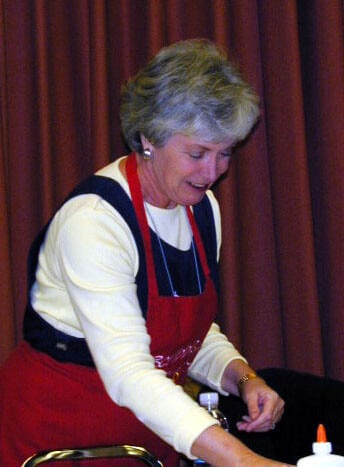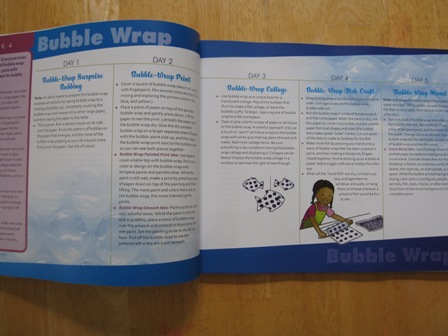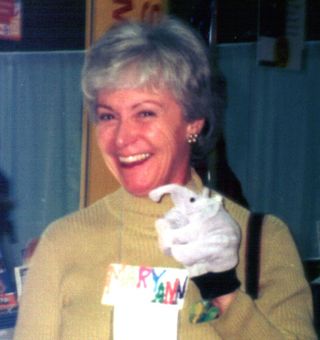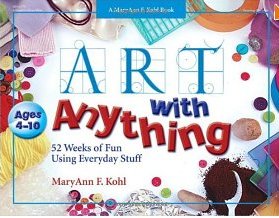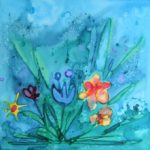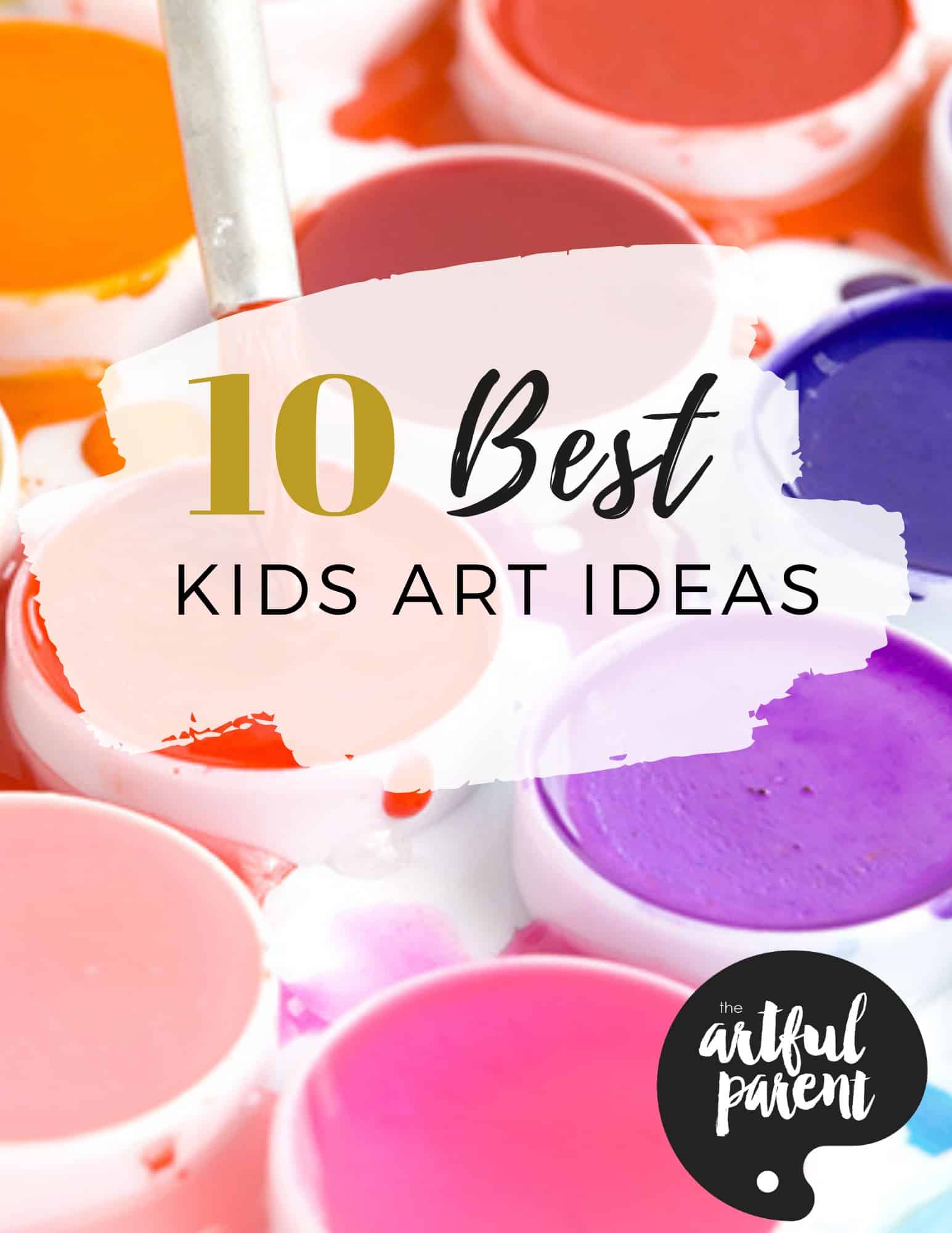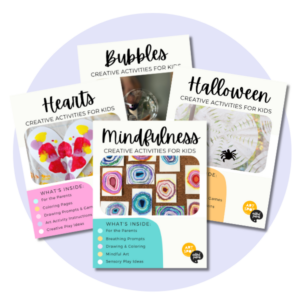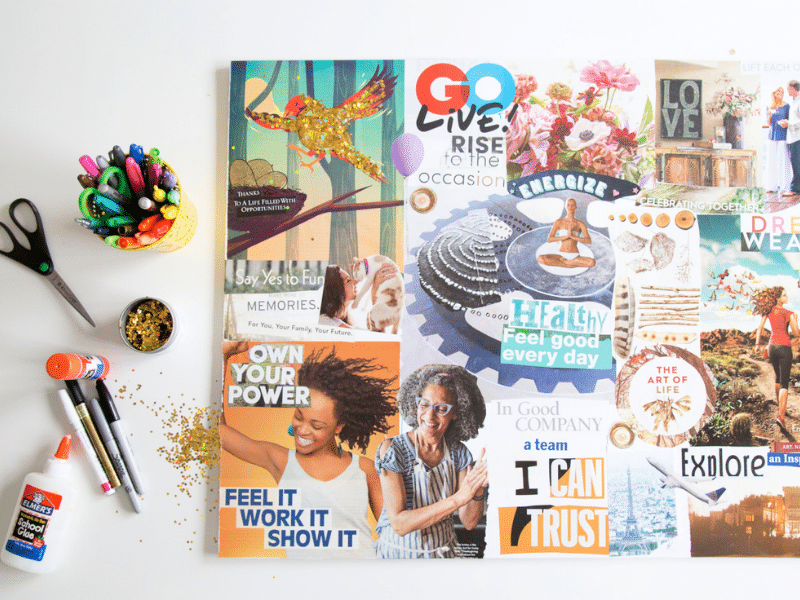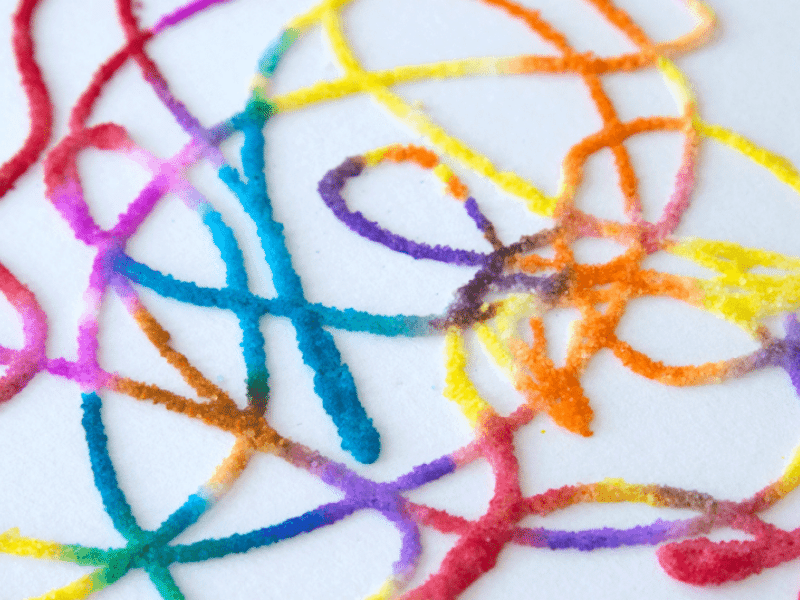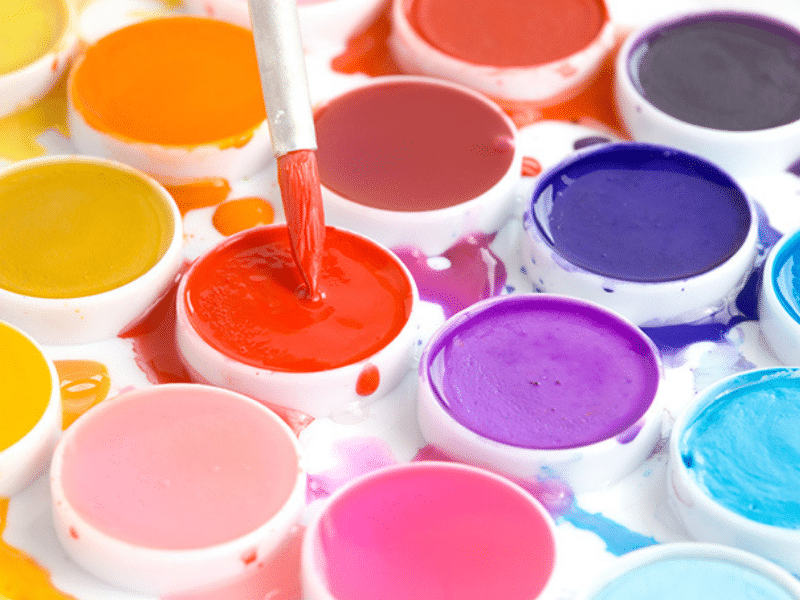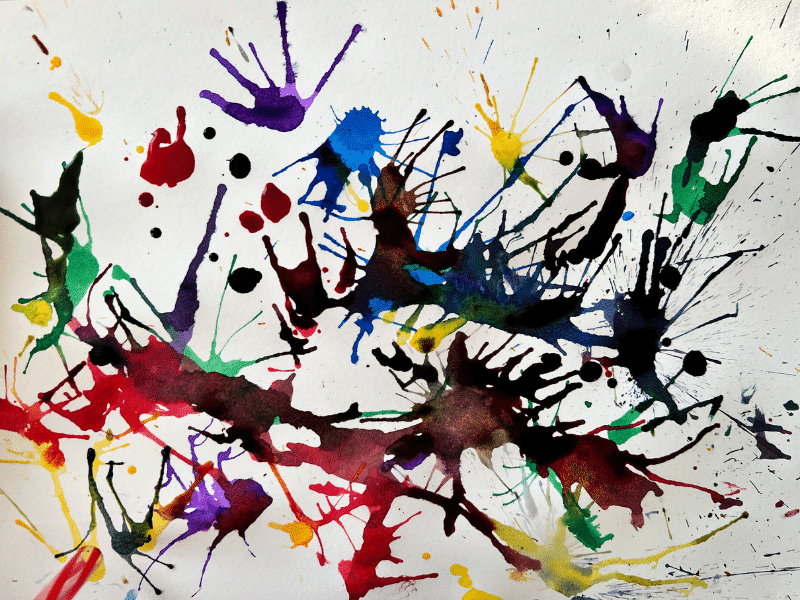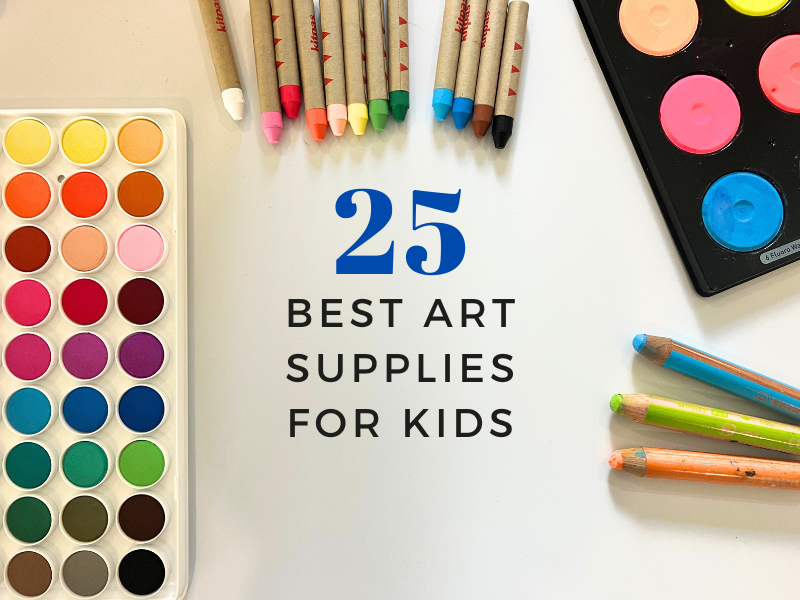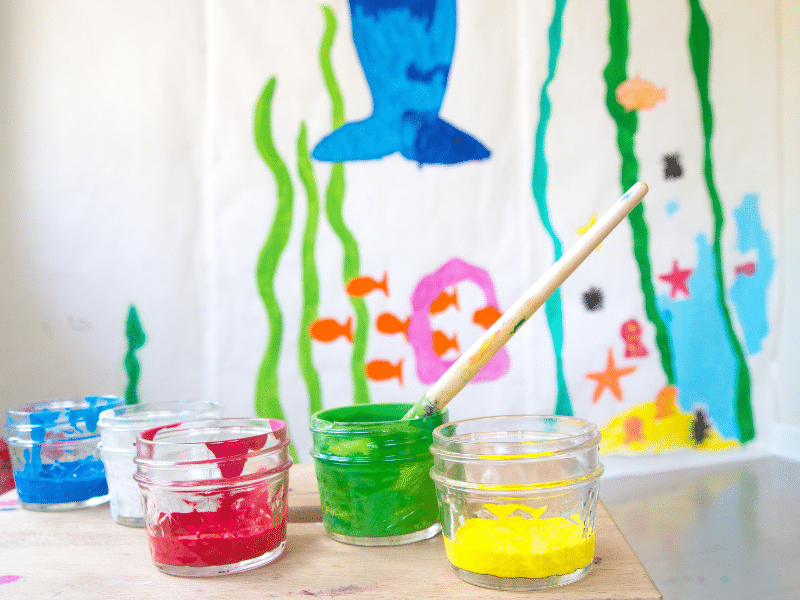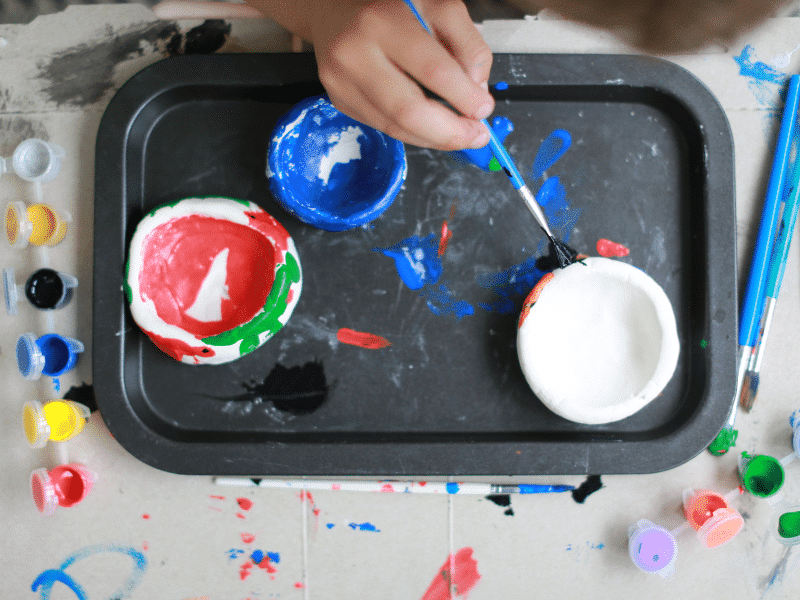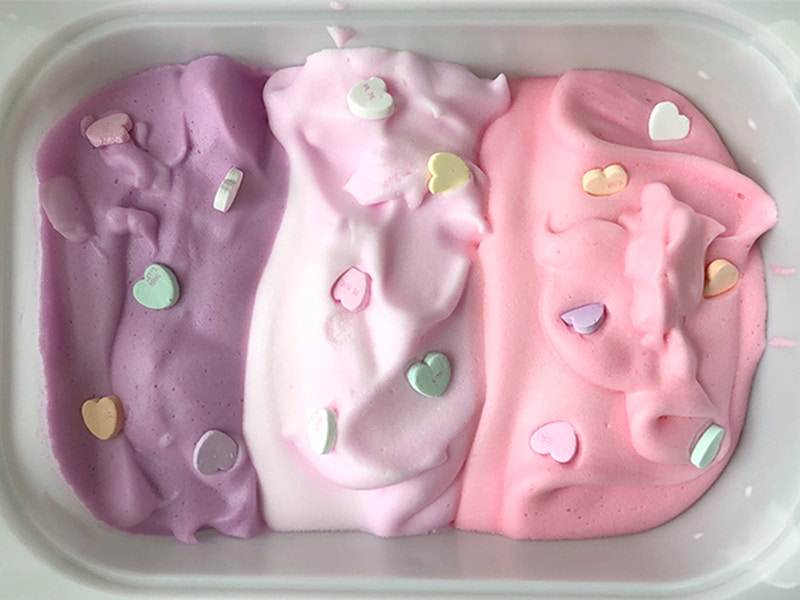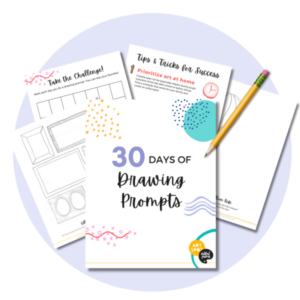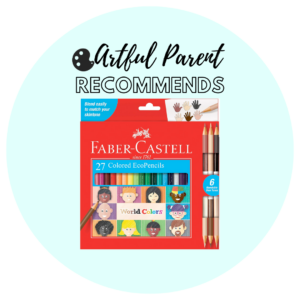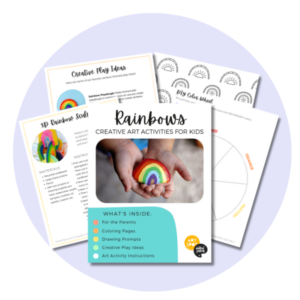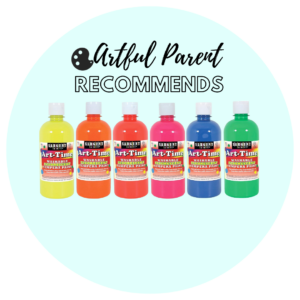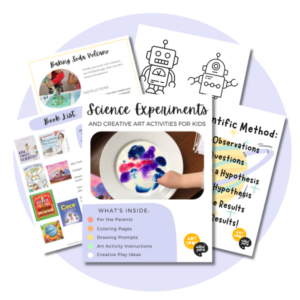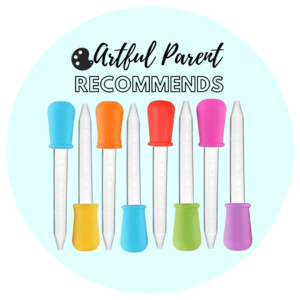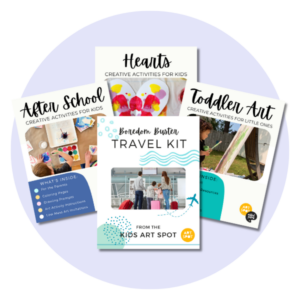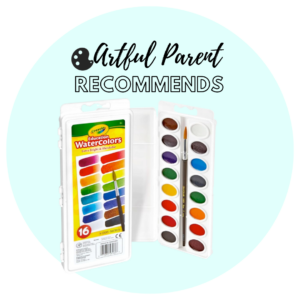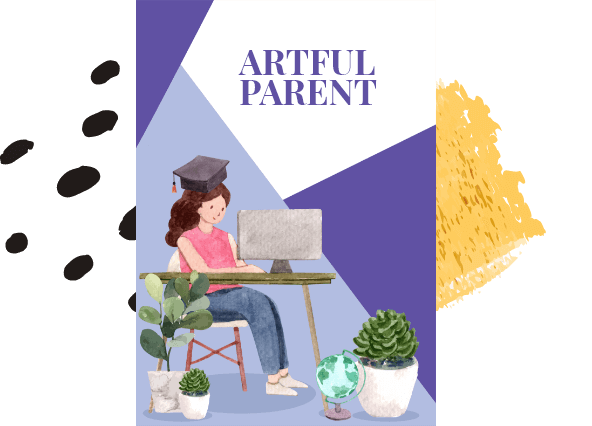MaryAnn
Kohl qualifies as a national treasure in my mind. For the past 25 years she has been writing books (23 of them!) to share
children's arts and crafts ideas and encourage parents and teachers to value art and creativity. Here she talks about her
new book, Art with Anything, as well as how art has changed in the schools since
she started teaching in the '70s, and even what she would do if she could change our education system.

MaryAnn’s new book, Art with Anything: 52 Weeks of Fun Using Everyday Stuff at
the end of this interview.***
Anything, and especially appreciate the idea that you can make art with everyday
items people have around their houses, including address labels, yarn, tin
foil, and salt. What gave you the idea for this book?
for writing this book: 1.) One is that we all have so many interesting
materials already at our disposal, and I wanted to focus on using things that
we have or could easily collect without buying materials. 2.) The other idea
was that I thought, "What if we do art five days in a row focused on ONE
material and all it can do? Wouldn't children learn more and develop their
skills more if we did this? And what if the first day was an introductory
exploratory project, and each day built on the first until the fifth day, which
would be the 'fancy day'?" I thought this would be a unique approach to
skill building through art and really good for kids. By the time they get to
the 5th day, they are ready for a really challenging exciting art project.
JEAN: The format – five days of
projects of increasing complexity with a single material
made you use this format?
Another thing I tried to do was
repeat some common techniques throughout the book like making collages or
constructing mobiles. This is a purposeful strategy that builds a child's
skill, understanding, and creativity. To create collages with different
materials will help the child learn new ways to use materials and face the
variety of challenges those materials present. For example, a collage with
tissue paper will be completely different than a collage with buttons, and a
mobile with heavy objects like nuts and bolts will have completely different
challenges than one with cotton balls. All of this combines to help the child
learn through exploring and creating.
JEAN: What are your favorite everyday
art materials and projects from Art with Anything?
MARYANN: You could ask me
this question on any day, and I'm sure my answer would change depending on what
the kids I most recently worked with had created. But today, I will say that I
love love love the Week 4 – Bubble Wrap. Who doesn't love bubble wrap for the
obvious popping fun? The five days of art with bubble wrap are very exciting
and have great outcomes. For example, Day 1 is an introductory crayon rubbing,
Day 2 has numerous painting ideas, Day 3 is a translucent collage, Day 4 offers
a fun way to make fish prints, and Day 5 is the all exciting Bubble Wrap Mural.
I should mention that though Bubble Wrap comes at Week 4, you don't have to
follow the weeks in order. You can do these projects in any order you wish.
They are in alphabetical order in the book just to make it easy for you, but
feel free to choose any week you like any time during the year. The book has 52
weeks so that you have a year's worth of choices.
A few other favorites are:
Week 8: CDs
Week 10: Coffee Filters
Week 23: Hole Punch Dots
and Week 35: Plastic Wrap
Oops, can't leave out Week 36: Leaves. I love the leaves
projects!
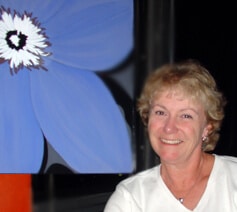
and teachers to prioritize art for 25 years as an author and for longer as a teacher. What are your top tips making art a part of everyday?
MARYANN: Art is easy to
provide if you tell yourself it doesn't have to be a big deal. And it doesn't!
Not everyone has to be a fabulous artful parent (read: messy)! If you are
willing to provide blank paper and crayons and markers, you're on the road to
providing wonderful creative opportunities for kids. [Did you know that
research shows that children who are allowed to draw daily without adult
interference do better in all academic areas than children who do not draw?
There you have it.] Okay, now add some tape, scissors, and a stapler. Now add a
bottle of glue or a gluestick. Next add some collage materials in a shoe box.
Provide all of this on a shelf or somewhere the child has free and easy access
to its use. As you are more comfortable, add more materials for the child's
use. On special days, bring out the paints and supplies that need a little more
supervision. Cover your table or floor or art area well, provide a damp sponge
for wiping messy fingers, a trash can for responsible child clean-up, and jump
in! I think I would suggest that art be a combination of free and easy art days
(nothing planned) mixed with planned art days that have more involved materials
and art ideas.
time of the day that is good for art, like right after lunch, or when the kids
get home from school and have had a snack and time to unwind. Every family will
be different, but all kids need to feel that art is respected and important for
it to be a priority. That said, let's get the kids outside and playing hard
too. Talk about priorities!

our approach to children’s art and art education since you first started
teaching?
MARYANN: When I began in the
70s, everything in art had to have a planned outcome. In fact, I think a
priority of the projects were that they should be "cute" or be a
craft that followed definite steps and had a definite outcome. I don't think we
even began to imagine anything else was possible. I remember the day we
discovered folding tissue and dipping it into colorful dye. My mind exploded!
The outcomes were entirely unique to each child, and they were mesmerized, as
was I. That one project changed everything for me. Many preschools still
operate with the idea that cute little crafts are "art". This is not
true, but times are changing. Since my first book came out in 1985, the
pendulum began to swing towards "independent creativity" where the
outcome of a child's art was unknown to anyone but the child. I am very proud
to have had played a part in changing the face of art for young children. As a
child, I never explored art as an open creative possibility. I think I've grown
in my own creativity and my relaxation about how my art has to look. We've come
a long way and it's so much more fun too!

see in schools and their art curriculums? Let’s say (just for fun) that
you have the power and the budget to make any changes you’d like to our
education system. What changes would you make?
MARYANN: Many schools do not
have art curriculums at all, and if any art is to happen, individual teachers
must take this on themselves. Some do, and some are scared to death and just
leave it out because they have no idea what to do. Some schools have art
specialists, and then the teachers in their own classrooms do no art. So
there is a wide gap in art education for our children. Some get lots of
wonderful art; some get zero. If I had the power you have just given me, thank
you!, I would bring art into every classroom as part of the curriculum where
kids are encouraged to explore, discover, and create without an adult sample or
model to copy. The art would be process, not product, oriented, and each
child's work would be an individual expression with the materials on hand. No
two artworks would look alike. Just like snowflakes, our children are each
unique, and so are their artworks.
training for teachers so that they could understand how easy it is to allow for
art as well as music, drama, creative writing, and in fact, all of the arts. I
think if they had training and permission to enjoy the arts, they would. Right
now, many teachers are completely at a loss for how to allow for the arts, and
because their districts do not encourage art education, they ignore it all
together. They are faced with more and more requirements for high test scores,
and think that art will interfere with the challenge. I wish they understood
that allowing kids to have art would actually help them do better on tests.
JEAN: Anything else you’d like to add?
MARYANN: We each have a whole
brain made of two hemispheres. The entire right half of the brain works on
things that are creative, intuitive, and subjective. This is where the arts
fit. Schools should work to provide education that addresses the whole
brain, not just half. As parents, we must allow our kids the time and the
materials to stimulate the right side of the brain through visual arts, which
includes drawing, painting, and sculpture. And there's a bonus: Doing art
with our kids is fun, and a wonderful way to spend time together. There is no
better blog on the internet today to help this happen than The Artful Parent
for inspiration and great ideas.
for art ideas from all my books. I will look forward to it!
My blog: https://maryannfkohl.typepad.com/blog/
My website: https://www.brightring.com
have you sharing your ideas with all of us!
—
Readers who leave a comment to this
interview by Thursday, July 1st at 12 midnight EST will be entered
into a random drawing to win a copy of MaryAnn F. Kohl’s new book, Art with
Anything: 52 Weeks of Fun Using Everyday Stuff.
—
The random number generator picked #1 this time (first time it's happened with me!), so Rebecca wins the copy of Art with Anything. Congrats Rebecca!
This looks
like a great book. Jean, thank you for helping us to focus on being
creative.
Rebecca
Related Posts
-
Glue Art on Canvas with Watercolors
We've been experimenting with various glue effects on canvas with watercolor art. The first was…
- Interview with MaryAnn F. Kohl on the Importance of Art
MaryAnn F. Kohl is an art educator and the author of numerous art activity books,…
-
Art in Action with Kids Art Videos
Hello, my friends! You may have noticed that I've dipped my toes into video lately.…

